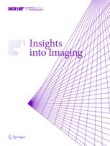Insights into Imaging is the official journal of the European Society of Radiology (ESR)
Quality assurance for automatically generated contours with additional deep learning
Deploying an automatic segmentation model in practice should require rigorous quality assurance (QA) and continuous monitoring of the model’s use and performance, particularly in high-stakes scenarios such as ...
